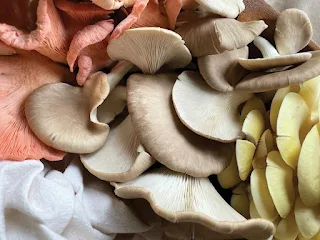Mushroom cultivation training in Visakhapatnam | Mushroom farming training in Visakhapatnam | Mushroom training online
Mushroom cultivation training in Visakhapatnam
Oyster mushroom (Pleurotus sp.) belonging to Class Basidiomycetes and Family Agaricaceae is popularly known as ‘dhingri’ in India and grows naturally in the temperate and tropical forests on dead and decaying wooden logs or sometimes on dying trunks of deciduous or coniferous woods.
The Biobritte mushroom company has mushroom cultivation training.
All types of mushroom cultivation training are available in the Biobritte fungi school.
It may also grow on decaying organic matter.
The fruit bodies of this mushroom are distinctly shell or spatula-shaped with different shades of white, cream, grey, yellow, pink, or light brown depending upon the species.
It is one of the most suitable fungal organisms for producing protein-rich food from various agro-wastes or forest wastes without composting.
The economic importance of the mushroom lies primarily in its use as food for human consumption.
It is rich in Vitamin C and B complex and the protein content varies between 1.6 to 2.5 percent.
It has most of the mineral salts required by the human body.
The niacin content is about ten times higher than any other vegetables.
Contact - 7709709816 / 9923806933
Tags - Mushroom cultivation training in Visakhapatnam , Biobritte cart, Mushroom farming training in Visakhapatnam , Top mushroom company, Mushroom training online,How can I learn mushroom farming?,Where is the training Centre of mushroom cultivation?,Which month is best for mushroom cultivation?,What are the steps in mushroom cultivation?,mushroom cultivation training near me,mushroom farming in india,types of mushroom in india,button mushroom,mushroom spawn,

Comments
Post a Comment